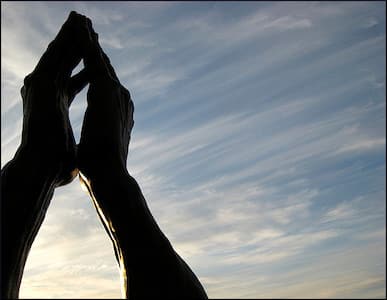
Not long ago, Childhood Obesity News passed along some anecdotal accounts concerning explicit and implicit bias as displayed by teachers of Physical Education in public schools.
And then, there was the influential cleric Oral Roberts. His career began in a “revival meeting” tent where as many as 3,000 people would wave handheld fans at themselves and hope to catch the spirit from this charismatic faith-healer. Later on, he helped to invent and define the role of the televangelist.
Roberts attended two universities but came away without a degree. What he perceived as higher education’s lack of concern for students’ health might have been a factor in his dissatisfaction. His life course was determined by a line in the Christian gospel where, in addition to spiritual well-being, the apostle John wished his readers physical and financial health as well. Without him, there might have been no Prosperity Gospel movement.
Alway an innovative fundraiser, in 1987 Roberts needed money for the City of Faith medical center, and sent his followers a plea to donate $8 million by a certain date, or else God would remove their beloved leader from earth and “call him home.” But it was not all about money. Roberts was serious about the health part, too. He founded a university, and designed its entire curriculum to his specifications.
The iconic public radio show, This American Life, went public about some people’s experiences at Oral Roberts University in Tulsa, Oklahoma. In the 1970s, Paul Brynteson was hired to be the first director of the physical education department. His new boss told him:
I’ve probably laid my hands and prayed for over a million — well over a million — people. And as I did that, little by little, I observed that I think I wouldn’t have to pray for the healing and health of these individuals if they would just take care of themselves.
The school had a $2 million fitness center and an aerobics program with a point system that awarded students for every physical activity they did. But at the 1975 graduation ceremony, Oral Roberts was unhappy to see that some students were obese. Word went out to the administration that things would have to change.
After that, reporter Daniel Engber says, every semester began with testing of all students’ lipid levels, lung capacity, and skin fold thickness. The obviously obese young people were subjected to weighing by hydrostatic immersion, which the journalist obviously regards as medieval.
It is very expensive, and there are accuracy issues, especially among groups like senior citizens and athletes, where body composition varies a lot. The process itself sounds harrowing, since the patient has to be submerged completely, and to remain perfectly still, all without a bit of stored air in the lungs. An uncredited writer says the ordeal…
[…] can lead to stress and panic for some people. In addition, if the individual moves, retains air, or must be let up before the measurement is finished, the whole test will have to be done again to return the most accurate readings. For some, this is more stress than it is worth.
As The New York Times reported,
These students are automatically placed on a weight‐reduction program. They meet with school doctors and sign a contract to lose a pound or two a week until they reach their goal. If a student fails to lose the weight, he or she faces probation and, eventually, suspension.
Males were supposed to weigh in at around 15% body fat, and 25% was defined as obese. Women had it easier: 20% body fat was considered ideal, and 35% obese. The Pounds Off Program did not last long, as some students called for help from the American Civil Liberties Union. The issue seemed to lay dormant for a while, but the emphasis on fitness at Oral Roberts University recently came back into public consciousness.
Your responses and feedback are welcome!
Source: “589: Tell Me I’m Fat,” ThisAmericanLife.org, 06/17/16
Source: “Hydrostatic Weighing: Is it Accurate?,” Dexafit.com,12/02/17
Source: “College Criticized for Get-Thin Policy,” NYT.com. 12/04/77
Photo credit: C Jill Reed on Visualhunt/CC BY-SA

 FAQs and Media Requests:
FAQs and Media Requests: 











